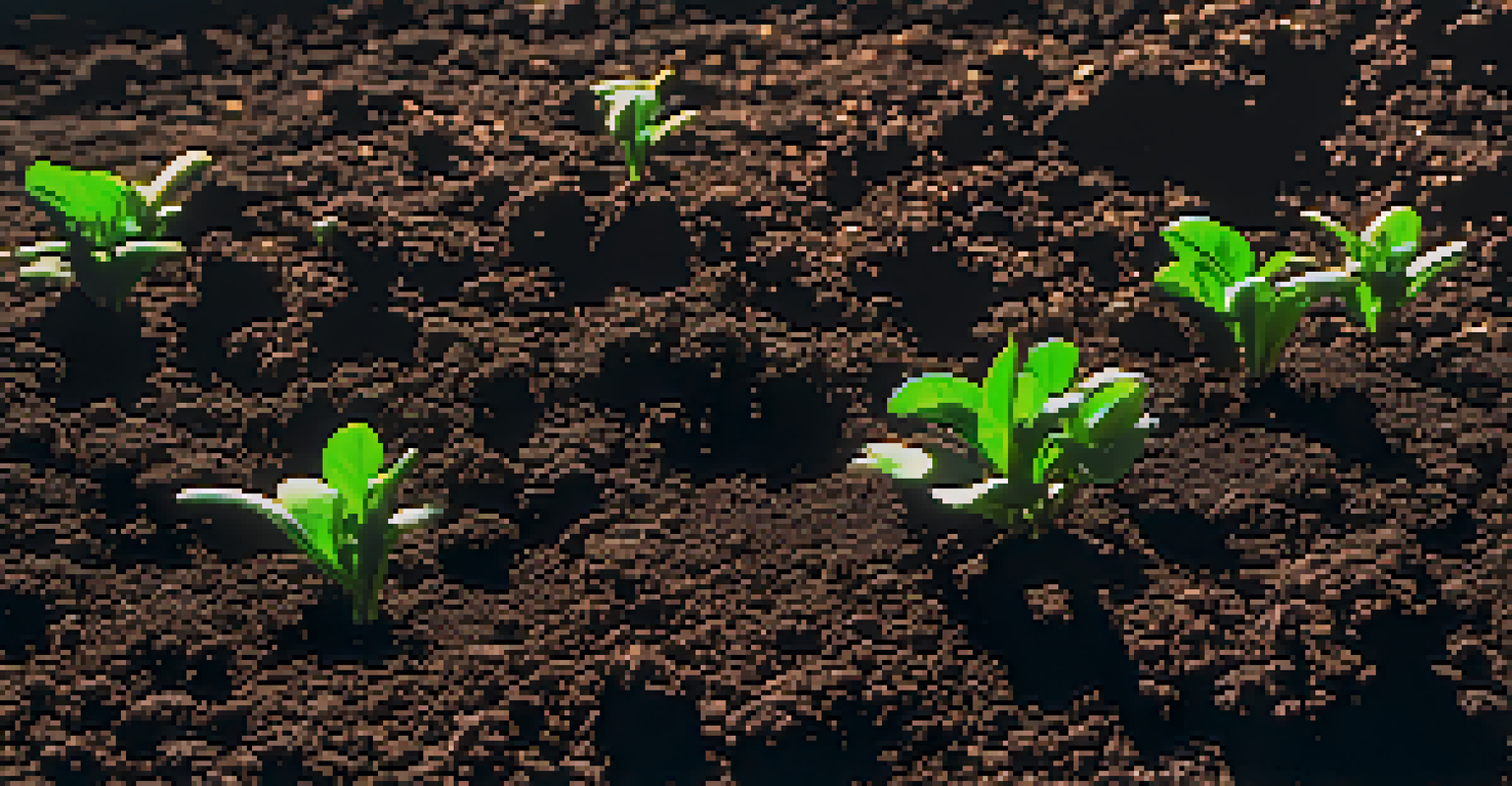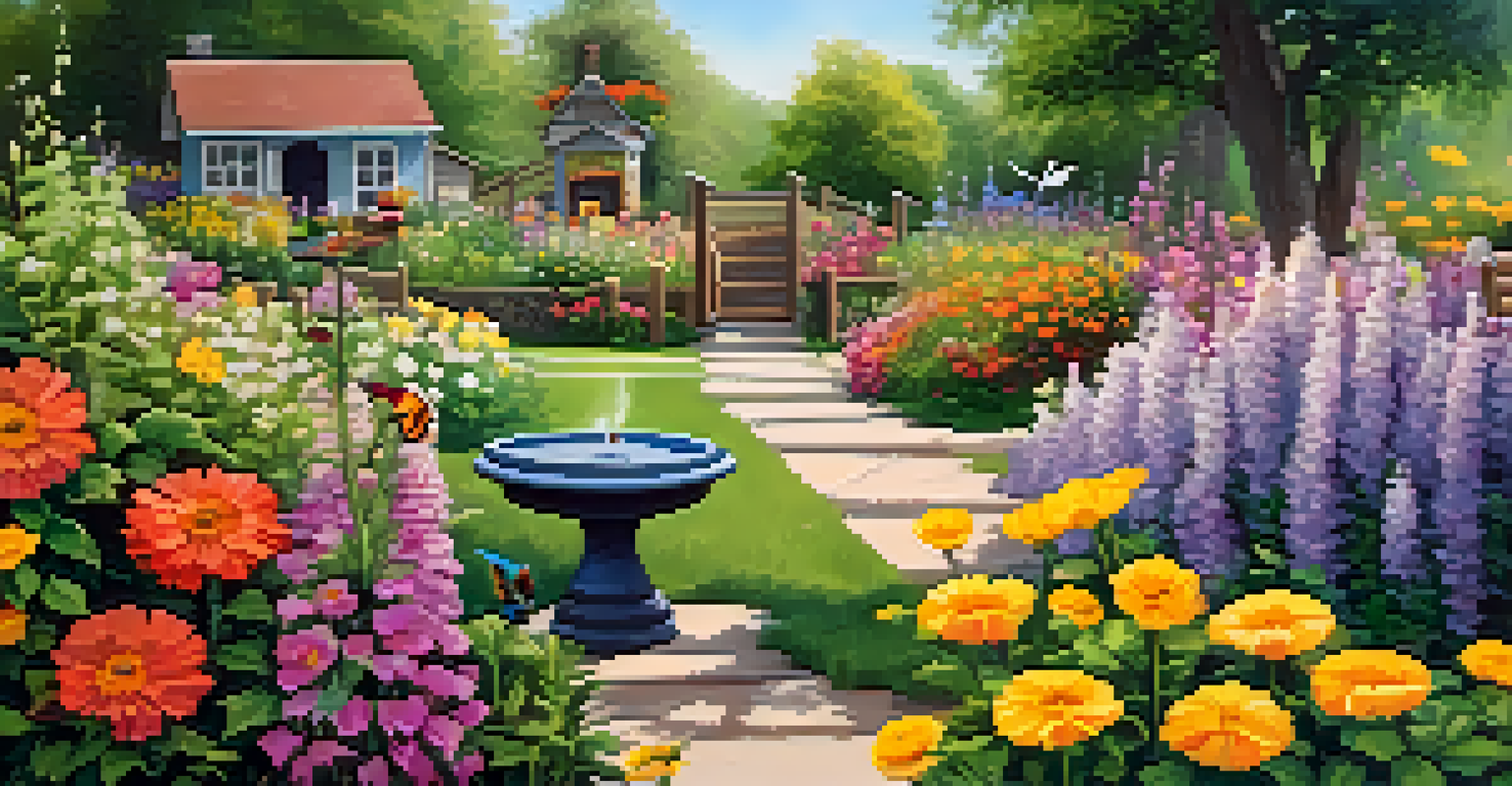Using Natural Pest Deterrents for Sustainable Gardens

Understanding the Importance of Sustainable Gardening
Sustainable gardening is all about creating a healthy environment for plants, people, and wildlife. By focusing on eco-friendly techniques, gardeners can minimize their impact on the earth while producing beautiful gardens. This approach not only conserves resources but also promotes biodiversity, ensuring that our ecosystems remain robust and resilient.
The greatest threat to our planet is the belief that someone else will save it.
One of the biggest challenges in sustainable gardening is dealing with pests. Instead of turning to chemical pesticides, which can harm beneficial insects and the surrounding ecosystem, gardeners can explore natural deterrents. These alternatives often prove to be just as effective while aligning with sustainable practices.
Embracing natural pest deterrents means fostering a garden that thrives on balance. By understanding the role pests play in the ecosystem, gardeners can develop strategies that keep their plants healthy without compromising environmental integrity.
Common Natural Pest Deterrents to Consider
There are several natural pest deterrents that gardeners can easily incorporate into their routines. For instance, plants like marigolds and lavender are known to repel various insects. By planting these alongside vegetables or flowers, you’re not only beautifying your garden but also creating a natural barrier against pests.

Additionally, using essential oils like neem and peppermint can effectively deter pests when mixed with water and sprayed on plants. These oils have strong scents that many insects find unappealing, and they are safe for humans and pets, making them a great choice for family gardens.
Natural Pest Control Strategies
Utilizing natural pest deterrents, such as companion planting and beneficial insects, can effectively manage pests while promoting a healthy garden ecosystem.
Another effective approach is introducing beneficial insects. Ladybugs, for example, feast on aphids, a common garden pest. By attracting these helpful allies to your garden, you can maintain a healthier balance between pests and their predators.
Creating a Healthy Soil Environment
Healthy soil is the foundation of a sustainable garden. When soil is rich in nutrients and beneficial microorganisms, plants are better equipped to withstand pest attacks. This resilience reduces the need for artificial pesticides, allowing your garden to thrive naturally.
Nature does not hurry, yet everything is accomplished.
To improve soil health, consider practices like composting and crop rotation. Compost not only enriches the soil but also encourages a vibrant ecosystem that can naturally deter pests. Rotating crops every season helps prevent the buildup of pests and diseases specific to certain plants, promoting overall garden health.
Incorporating mulch is another excellent way to enhance soil quality while deterring pests. Organic mulch can suppress weed growth, retain moisture, and create a habitat for beneficial insects, all of which contribute to a more resilient garden.
Utilizing Companion Planting Techniques
Companion planting is an ancient practice that involves placing certain plants together for mutual benefit. This technique can help deter pests naturally while promoting growth. For example, planting basil near tomatoes can repel tomato hornworms, creating a protective shield for your crops.
In addition to pest deterrence, companion planting can enhance flavors and improve yields. For instance, planting garlic alongside roses can not only ward off aphids but also result in healthier blooms. This synergy in the garden creates a more vibrant and productive environment.
Enhancing Soil Health
Healthy soil is crucial for sustainable gardening, as it supports plant resilience against pests and reduces the need for artificial pesticides.
When planning your garden layout, consider the compatibility of your plants. With a little research, you can create combinations that foster a thriving ecosystem, making your garden a sanctuary for both plants and the beneficial creatures that support them.
Natural Sprays and Homemade Solutions
Creating your own natural pest sprays can be a fun and effective way to protect your garden. Simple ingredients like soap, vinegar, and water can be combined to create solutions that deter unwanted insects. For instance, a soap spray can suffocate soft-bodied pests like aphids without harming your plants.
Another popular homemade solution is a garlic or chili pepper spray. By blending these ingredients with water and letting the mixture steep, you create a potent deterrent that many pests find unpalatable. Just be sure to test it on a small area of your plants first to ensure they don’t react negatively.
Using these homemade sprays not only saves money but also reduces your reliance on commercial pesticides. Plus, it’s a great way to engage kids in gardening, teaching them about the importance of natural solutions and sustainability.
Encouraging Wildlife to Maintain Balance
A thriving garden is often a haven for various wildlife, which can play a crucial role in pest management. Birds, frogs, and beneficial insects help keep pest populations in check, creating a natural balance. By encouraging wildlife, you can create a more resilient garden ecosystem.
One way to attract wildlife is by providing habitats such as birdhouses, insect hotels, and water sources. These additions invite creatures that can help control pests, reducing the need for human intervention. For example, a well-placed birdbath can attract insect-eating birds that will help keep your garden healthy.
Encouraging Wildlife in Gardens
Attracting wildlife, like birds and beneficial insects, fosters a natural balance in the garden, aiding in pest control and enhancing biodiversity.
Creating a welcoming environment for wildlife not only benefits your garden but also enhances its biodiversity. By embracing this natural cycle, gardeners can cultivate beauty while fostering an ecosystem that thrives on balance and mutual support.
Maintaining an Ongoing Pest Management Strategy
Implementing natural pest deterrents is not a one-time effort; it requires ongoing attention and adaptation. Regularly monitoring your garden for signs of pests and adjusting your strategies accordingly will help maintain a healthy balance. Keeping a garden journal can be a useful tool to track what works and what doesn’t over time.
In addition, staying informed about seasonal pest patterns can guide your prevention efforts. For example, some pests are more prevalent in certain months, so being proactive during those times can make a significant difference. By adjusting your planting schedules and deterrent applications, you can stay one step ahead of potential infestations.

Ultimately, developing a responsive pest management strategy not only leads to a healthier garden but also fosters a deeper connection to the natural world. By embracing the ebb and flow of nature, gardeners can create sustainable spaces that flourish year after year.